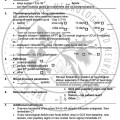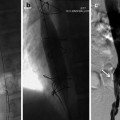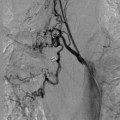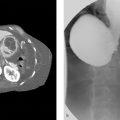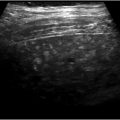Abstract
Background
Chronic respiratory diseases are known to be associated with alterations in mucus rheology, but limited information is available regarding chronic cough. The aim of this study was to determine the sputum rheology in chronic productive cough (CPC) in comparison to bronchial asthma (BA).
Methods
The viscoelasticity profiles of spontaneous sputum obtained from 26 patients with CPC (10 sinobronchial syndrome [SBS], 16 non-SBS) and 25 patients with BA (12 mild-persistent, 7 moderate, and 6 severe) were analyzed by rheometry in a single center. The non-SBS group included fungus-associated chronic cough, post-COVID-19 cough, bronchorrhea, and unexplained chronic cough.
Results
Viscoelastic modulus ( G ∗ ) and viscous modulus ( G″ ) of the SBS group were similar to those of the total BA group. Although critical strain ( γ C ) and critical stress ( σ C ) tended to be larger in the BA group, and the former was comparable between the non-SBS group and the moderate or severe BA group. In the non-SBS group, G″ was closely correlated with FeNO, and γ C was inversely correlated with respiratory function, as in the BA group, but no such correlations were observed in the SBS group.
Conclusions
Quantitative rheological analysis revealed unique viscoelastic characteristics of spontaneous sputum and altered association with clinical biomarkers in the non-SBS group, in which the profile was more similar to BA than SBS in CPC. This new rheometer can identify features of sputum in patients with CPC that cannot be detected by conventional methods. Further investigations of sputum rheology in CPC are warranted to understand its pathogenesis.
1
Introduction
Chronic respiratory diseases are often characterized by impaired mucociliary clearance, leading to muco-obstruction [ ]. As it has been suggested that the impairment is due to alteration of the viscoelastic properties of mucus [ ], the rheology of sputum has been investigated in several chronic respiratory diseases, including asthma, cystic fibrosis (CF), and chronic obstructive pulmonary diseases (COPD). However, previous studies focused mainly on quasistatic viscoelastic properties (linear storage and loss moduli), and methods have not been standardized due to the complexity of the procedure. Recently, Patarin and colleagues established a method for quantitative analysis of both quasistatic and some dynamic (flow point) properties, leading to development of the Rheomuco ® rheometer (Rheonova, Grenoble, France) [ ], which is used to characterize the rheological properties of sputum in chronic respiratory diseases [ ]. The outcomes are reproducible, and the new method successfully identified abnormalities in new rheological readouts. For example, Patarin and colleagues reported that the flow point is markedly increased in muco-obstructive diseases [ ]. The first clinical study to use sputum rheology for azithromycin treatment was conducted in patients with COPD (COPD CaRhe study) [ ], which led to the implementation of sputum rheology in routine clinical practice.
Chronic cough places a huge burden on patients and healthcare systems, but its pathophysiology and effective treatment regimens remain to be determined [ ]. Limited information is available regarding the viscoelastic properties of sputum in patients with chronic cough. Therefore, this study was performed to quantify the viscoelasticity of sputum using Rheomuco ® in patients with chronic cough, especially chronic productive cough (CPC) with relatively high sputum volume, and to determine the relations between rheological data and clinical biomarkers, including hematological and physiological test results, or clinical manifestations evaluated by cough and sputum questionnaires. The results were also compared with those of patients with bronchial asthma (BA).
2
Methods
2.1
Patients
Twenty-six patients with CPC and 25 patients with BA (12 mild-persistent, 7 moderate-persistent, and 6 severe-persistent asthma classified according to the Japanese guidelines for adult asthma (JGL) 2021 [ ]), who visited our single facility during a 5-month period from November 20, 2022 and were able to produce spontaneous sputum were included in this observational study. Both CPC and BA patients were aged 18 years or older, had no other respiratory diseases, and were currently visiting our hospital. Patients with symptoms such as cough and phlegm but not considered to have acute exacerbation were included in the study. Patients with cough-variant asthma or cough-predominant asthma were excluded.
The diagnosis of each patient with prolonged/chronic cough was made according to the guidelines of the Japanese Cough Society [ ] and the Japanese Respiratory Society [ ]. The diagnostic criteria for sinobronchial syndrome (SBS), the main cause of cough in CPC, are as follows: productive cough without wheezing lasting for at least 8 weeks; one or more of symptoms such as postnasal drip and throat clearing, signs of mucus or mucopurulent secretions in the nasopharynx and cobblestone pattern of mucosa, fluid retention or mucosal thickening on sinus Xp or computed tomography (CT), and increased neutrophils other than eosinophils in the nasal discharge; and cough relieved by treatment with macrolide antibiotics.
Patients with CPC other than SBS and those in whom macrolides were not sufficiently effective due to the coexistence of SBS and other diseases were also included in the non-SBS group as patients with atypical SBS. Patients with fungus-associated chronic cough (FACC), a recent addition to the guidelines defined by the presence of environmental fungi (such as filamentous basidiomycetes) in sputum and proven efficacy of low-dose antifungal agents [ , ], was included in the non-SBS group.
The study was approved by the Ethics Committee of Kanazawa Kasuga Clinic (Ethics Committee Kasuga approval No. 2022-01, 14 Nov. 2022) and all patients provided written informed consent.
2.2
Clinical biomarkers
Clinical biomarker data were obtained from routine examinations, including hematological (whole blood cells, eosinophil count, neutrophil count, and serum IgE level), cell fractionation of sputum, and physiological examinations (the general pulmonary function, including predicted forced vital capacity (%FVC), predicted forced expiratory volume in 1 s (%FEV 1 ), FEV 1 /FVC (FEV 1 %), maximal mid-expiratory flow (%MMEF) as a parameter of small airway dysfunction (SAD) [ ], and fractional exhaled nitric oxide (FeNO)).
2.3
Evaluation for clinical manifestations general pulmonary function
The severity of cough/sputum was assessed using the cough/sputum visual analogue scale (VAS), which has a scale from 0 to 100 mm, with 100 mm representing the worst cough/sputum imaginable [ , ]. For patients with CPC, the Japanese version of the Leicester Cough Questionnaire (J-LCQ; copyright, Niimi and Ogawa) [ ] was used to assess cough-related quality of life. For patients with asthma, the Asthma Control Test (ACT) was used to assess asthma control status [ ].
2.4
Sputum collection and rheological measurement
Each patient was given a Petri dish for collecting sputum samples by self-discharge in a clean booth. As the sputum samples from CPC patients were small, the dish was tilted slightly and the sputum mass was stirred with a spatula. The mucus components were attracted to the spatula. By stirring at the higher side of the dish, the less viscous saliva components collected at the lower side of the dish and could be removed with a dropper. The remaining sputum components were applied evenly to the entire surface of the Rheomuco ® measuring cell with the spatula. More sputum is required for culturing bacteria or fungi, measuring inflammatory cell fractions, investigating the reproducibility of sputum rheology measurements, etc. In such cases, saliva components were similarly removed on petri dishes and transferred to 5-mL mini bottles (Biomedical Research Institute, Tokyo, Japan), mixed for 1 min in a vortex mixer (MX-S DLAB; AS ONE Corporation, Osaka, Japan), and stored at room temperature until testing. Rheometric analysis was performed using the Rheomuco ® rheometer (Rheonova) at 37 °C with a strain sweep at 1 Hz with increasing strain from 0.01 % to 10,000 % according to the manufacturer’s instructions [ ]. The following 11 parameters were measured automatically: viscoelastic modulus ( G ∗ = G′ + iG″ ), elastic modulus ( G′ ), viscous modulus ( G″ ), damping factor (tan δ = G″ / G′ ), tack (tan δ / G′ ), limit linear strain ( γ L ), limit linear stress ( σ L ), critical strain ( γ C ), critical stress ( σ C ), critical modulus ( G ∗ C ), and elastic force ( G ∗ × σ C ). In general, as linear region properties, G ∗ is a marker of stiffness of the mucus at rest, and is related to concentrations of constituents in mucus. The tan δ is a ratio of viscous effects to elastic effects, and is related to the molecular nature of the constituents in mucus. The flow point is the point at which elasticity and viscosity reverse (crossover) when the sputum is pulled and strain is increased, and the sputum falls apart. The strain to the breaking point is γ C , and the stress required to break apart is σ C . Therefore, γ C represents stringiness and stretchability of the mucus before flow, and σ C represents gel force and strength of the mucus before flow.
Initially, we examined the procedural reproducibility of 11 rheological parameters in spontaneous sputum samples. The sputum was divided into at least two portions, and rheological parameters were measured at intervals of approximately 15 min no more than 30 min after collection. We also measured rheological parameters 3 h after collection of some samples ( Supplementary Table 1 ). The intraclass correlation coefficients (ICC) were ≥0.7 for the eight markers other than γ L , σ L , and G ∗ × σ C (ICC = 0.196, 0.563, and 0.547, respectively), suggesting good reproducibility. However, correlations were very poor between rheological parameters measured immediately and at 3 h after collection, suggesting that the viscoelastic characteristics were maintained for at least 30 min but not 3 h after collection. Both γ L and σ L were parameters of interest but were removed from the analysis in this study due to their poor reproducibility and missing data.
2.5
Statistical analysis
Continuous variables are expressed as the mean ± standard deviation (SD) or median and interquartile range (IQR) as appropriate. All statistical analyses were performed with EZR (Jichi Medical University Saitama Medical Center, Japan) [ ], which is a modified version of R Commander designed to add statistical functions frequently used in biostatistics. For non-parametric comparisons between the two groups, the Mann-Whitney U test was used. One-way analysis of variance (ANOVA) was used to compare means of three or more groups followed by Dunnett’s multi-comparison analysis. Spearman or Pearson correlation analysis was performed for analysis of correlations between two parameters.
3
Results
The total of 26 CPC patients consisted of 10 with SBS and 16 with non-SBS. The non-SBS group included three cases of FACC and one each of post-COVID-19 cough [ ], bronchorrhea, and unexplained chronic cough (UCC) [ ]. All seven of the multimorbidity cases were complicated by SBS ( Supplementary Table 2 ). Patient demographics and medications at the enrollment were shown in Table 1 . There were no significant differences in patient background characteristics, inflammatory cell fractions in peripheral blood and sputum, or respiratory function between the SBS and non-SBS groups. However, the non-SBS group had a significantly longer cough duration ( P = 0.023) and higher serum IgE levels ( P = 0.008) than the SBS group. There was no significant difference in J-LCQ score between the two groups, but sputum VAS tended to be higher in the non-SBS group.
| Chronic productive cough | Bronchial asthma | |||||
|---|---|---|---|---|---|---|
| SBS (n = 10) | Non-SBS (n = 16) | mild-persistent (n = 12) | moderate-persistent (n = 7) | severe-persistent (n = 6) | Total (n = 25) | |
| Age, years | 63 [49.3–69.5] | 67 [64.8–74.0] | 66.5 [63.8–76.8] | 74 [70.5–81.5] | 75.5 [72.5–80] | 73 [66–80] |
| Sex | F:8 M:2 | F:6 M:10 | F:5 M:7 | F:4 M:3 | F:4 M:2 | F:13 M:12 |
| Body-mass index, kg/m 2 | 22.6 (1.6) | 23.5 (1.8) | 22.8 (2.0) | 25.0 (2.0) | 23.0 (1.6) | 23.5 (2.1) |
| Smoking status n (%) | ||||||
| Current smoker | 0 (0) | 0 (0) | 0 (0) | 2 (29) | 0 (0) | 2 (8) |
| Former smoker | 1 (10) | 2 (12) | 2 (17) | 1 (14) | 0 (0) | 3 (12) |
| Never smoker | 9 (90) | 14 (88) | 10 (83) | 4 (57) | 6 (100) | 20 (80) |
| Cough duration, weeks | 14.1 (13.5) | 23.3 (13,3) ∗ | N.A. | N.A. | N.A. | N.A. |
| Atopic diseases | ||||||
| Allergic rhinitis | 0 | 1 (6.3) | 5 (41.7) | 1 (14.3) | 4 (66.7) | 10 (40.0) |
| Atopic dermatitis | 0 | 1 (6.3) | 3 (25.0) | 2 (28.6) | 0 | 5 (20.0) |
| WBC counts.,/μl | 5270.0 (1404.8) | 5337.5 (1101.5) | 5291.7 (1376.7) | 6471.4 (1453.4) | 5850.0 (2586.7) | 5756.0 (1746.4) |
| Eo. Counts in pb.,/μl | 150.9 (102.0) | 117.9 (78.4) | 247.4 (300.6) | 454.3 (273.1) § | 295.3 (301.8) | 316.8 (289.1) |
| Neu. Counts in pb.,/μl | 3210.4 (883.3) | 3339.0 (957.9) | 2842.7 (1051.8) | 3728.6 (1237.3) | 3168.2 (178.8) | 3168.9 (1302.5) |
| Serum IgE, IU/ml | 29.0 (28.2) | 280.9 (570.4) ∗∗∗ | 157.5 (195.5) | 321.5 (275.1) | 198.2 (129.2) | 208.7 (203.2) |
| Sputum-Neu., % | 45.8 (10.2) | 46.7 (24.7) | 62.3 (31.7) | 58.8 (28.8) | 51.0 (23.3) | 58.4 (27.1) |
| Sputum-Eo., % | 0.8 (0.5) | 0.5 (0.7) | 0.4 (0.9) | 2.8 (5.2) | 6.0 (11.8) | 2.5 (6.4) |
| % FVC, % | 113.3 (15.6) | 110.7 (13.4) | 108.3 (8.4) | 107.2 (14.1) | 88.0 (27.5) § | 106.0 (12.4) |
| % FEV 1, % | 107.4 (13.5) | 106.0 (15.4) | 104.6 (11.1) | 91.8 (18.7) | 75.5 (32.0) §§ | 96.4 (19.3) |
| FEV 1 %, % | 78.3 (5.3) | 77.3 (4.1) | 78.9 (5.1) | 67.2 (6.9) §§ | 67.8 (16.9) §§ | 72.6 (10.5) |
| % MMEF, % | 77.1 (17.6) | 80.7 (22.8) | 78.1 (16.0) | 46.1 (24.0) § | 47.1 (31.0) | 60.9 (26.8) |
| FeNO, ppb | 18.3 (7.5) | 24.1 (13.7) | 36.3 (23.9) | 42.9 (35.4) | 23.7 (19.2) | 35.1 (26.0) |
| Cough-VAS, mm | 32.7 (22.9) | 28.6 (22.4) | 18.8 (21.6) | 18.1 (17.0) | 36.7 (18.6) | 22.9 (20.5) |
| Sputum-VAS, mm | 38.4 (26.8) | 51.4 (26.8) | 20.8 (20.6) | 22.3 (18.2) | 37.8 (18.1) | 25.3 (19.9) |
| Total score of J-LCQ | 14.2 (3.8) | 15.5 (3.2) | N.A. | N.A. | N.A. | N.A. |
| ACT | N.A. | N.A. | 21.4 (3.7) | 21.2 (3.2) | 18.0 (4.2) | 20.4 (3.8) |
| Medications at the enrollment n (%) | ||||||
| Expectorant | 5 (50) | 5 (31) | 0 (0) | 1 (14) | 1 (17) | 2 (8) |
| Macrolides | 5 (50) | 11 (69) | 4 (33) | 6 (86) | 5 (83) | 15 (60) |
| Antihistamines | 5 (50) | 4 (25) | 8 (67) | 4 (57) | 6 (100) | 18 (72) |
| Proton pump inhibitors | 3 (30) | 2 (13) | 1 (8) | 1 (14) | 3 (50) | 5 (20) |
| ICS | 3 (30) | 5 (31) | 12 (100) | 7 (100) | 6 (100) | 25 (100) |
| SABA | 0 (0) | 0 (0) | 6 (50) | 7 (100) | 5 (83) | 18 (72) |
| LABA | 0 (0) | 0 (0) | 12 (100) | 7 (100) | 6 (100) | 25 (100) |
| LAMA | 2 (20) | 2 (13) | 2 (17) | 6 (86) | 3 (50) | 11 (44) |
| LTRA | 3 (30) | 1 (6) | 12 (100) | 7 (100) | 6 (100) | 25 (100) |
| Oral corticosteroids | 0 (0) | 0 (0) | 0 (0) | 0 (0) | 1 (17) | 1 (4) |
| Others | 0 (0) | 0 (0) | 0 (0) | 0 (0) | Dupilumab 1 (17) | 1 (4) |
The peripheral blood eosinophil count was significantly higher in the moderate BA group than the SBS group. Both %FVC and %FEV 1 were significantly greater in the SBS group than the severe BA group ( P = 0.014, P = 0.006, respectively), and FEV 1 % was significantly greater in the SBS group than the moderate and severe BA groups ( P = 0.012, P = 0.037, respectively). With regard to SAD, the % MMEF was significantly higher in the SBS group than the moderate BA group ( P = 0.025). There were no significant differences in sputum VAS among all groups, but it tended to be higher in the non-SBS group.
There were no significant differences in rheological parameters of sputum between the SBS group and the non-SBS group or any of the asthma groups (mild, moderate, severe, or total) ( Table 2 ). G″ values in the linear viscoelastic region (LVR) were comparable between the SBS, non-SBS, and mild and moderate BA groups, but not the severe BA group ( Fig. 1 A). On the other hand, the values of γ C and σ C at the flow point, and G ∗ × σ C tended to be higher in the non-SBS group than the SBS group ( Table 2 ), and γ C in the non-SBS group was comparable to the values in the moderate and severe BA groups ( Fig. 1 B).
| Chronic productive cough group | Bronchial asthma group | |||||
|---|---|---|---|---|---|---|
| SBS (n = 10) | non-SBS (n = 16) | mild (n = 12) | moderate (n = 7) | severe (n = 6) | total (n = 25) | |
| G ∗ , Pa | 15.3 [13.2–17.1] | 17.3 [13.6–21.0] | 16.8 [10.6–22.4] | 15.7 [10.5–28.6] | 8.72 [7.91–12.3] | 15.7 [9.47–24.9] |
| G ′, Pa | 14.8 [12.7–16.6] | 16.9 [13,3–20.5] | 16.4 [10.2–21.9] | 15.2 [10.2–28.0] | 8.52 [7.69–12.0] | 15.2 [9.16–24.3] |
| G ″, Pa | 3.66 [3.25–4.34] | 3.99 [2.96–4.88] | 4.13 [2.76–4.85] | 3.95 [2.62–5.60] | 2.03 [1.89–2.51] | 3.44 [2.41–5.14] |
| Tan δ , [-] | 0.237 [0.211–0.263] | 0.227 [0.213–0.249] | 0.231 [0.216–0.267] | 0.211 [0.199–0.254] | 0.228 [0.210–0.255] | 0.228 [0.206–0.263] |
| tack, Pa −1 | 0.0176 [0.0145–0.0213] | 0.0127 [0.0110–0.0162] | 0.0138 [0.0104–0.0244] | 0.0149 [0.00735–0.0176] | 0.025 [0.0179–0.0327] | 0.0158 [0.00868–0.0258] |
| γ C, [-] | 6.99 [5.69–8.45] | 14.7 [7.09–35.7] | 7.66 [5.46–16.3] | 17.1 [14.2–43.7] | 19.9 [15.8–26.1] | 15.4 [8.39–27.2] |
| σ C, Pa | 9.63 [8.33–16.9] | 16.5 [9.93–32.9] | 8.85 [7.70–19.6] | 45.5 [35.6–58.0] | 18.8 [8.99–59.3] | 11.4 [8.28–47.6] |
| G ∗ C, Pa | 1.40 [0.929–1.67] | 1.32 [0.888–1.94] | 1.62 [0.838–2.19] | 1.09 [0.94–2.36] | 0.663 [0.564–0.909] | 1.09 [0.731–2.09] |
| G ∗ × σ C, Pa 2 | 14.8 [11.8–21.5] | 23.7 [17.6–49.9] | 15.3 [10.7–28.7] | 3.2 [49.4–88.9] | 16.8 [5.24–35.4] | 25.6 [8.07–53.2] |

Correlation analysis between the rheological parameters and laboratory/clinical biomarkers showed that FeNO values were moderately correlated with G ∗ , G″ , and G ∗ C in the non-SBS group but not the SBS group ( Table 3 , Fig. 1 C and D). Furthermore, γ C was inversely correlated with %FVC, %FEV 1 , and %MMEF in the non-SBS group, similar to the BA group, and but this correlation was not observed in the SBS group ( Table 3 , Fig. 1 E and F). The total BA group showed moderate correlations between peripheral blood eosinophil count and G″ and G ∗ C ( P = 0.0025, P = 0.015, respectively), between sputum eosinophil ratio and σ C ( P = 0.025), and between FeNO value and G″ and G ∗ C ( P = 0.034, P = 0.018, respectively).
| Pb. Eo. (/μl) | Pb Neu. (/μl) | IgE (IU/ml) | Sp. Eo. (%) | Sp. Neu. (%) | FeNO (ppb) | %FVC | %FEV 1 | FEV 1 % | %MMEF | |
|---|---|---|---|---|---|---|---|---|---|---|
| SBS group | ||||||||||
| G ∗ , Pa | 0.14 | 0.38 | −0.51 | 0.47 | −0.10 | −0.30 | −0.20 | −0.04 | 0.23 | 0.26 |
| G ″, Pa | −0.08 | 0.43 | −0.52 | 0.43 | 0.1 | −0.07 | −0.12 | 0.03 | 0.11 | 0.16 |
| γ C , [-] | 0.01 | 0.43 | −0.15 | 0.29 | −0.83 | 0.16 | −0.60 | −0.48 | 0.64 | 0.25 |
| σ C, Pa | 0.06 | 0.45 | −0.15 | 0.54 | −0.81 | 0.06 | −0.65 | −0.65 | 0.61 | 0.19 |
| G ∗ C, Pa | 0.02 | −0.12 | −0.11 | 0.27 | 0.3 | −0.29 | 0.16 | 0.15 | −0.19 | −0.08 |
| G ∗ × σ C, Pa 2 | 0.13 | 0.19 | −0.18 | 0.48 | −0.11 | −0.26 | −0.37 | −0.29 | 0.27 | 0.12 |
| Non-SBS group | ||||||||||
| G ∗ , Pa | 0.25 | 0.06 | 0.38 | 0.03 | 0.49 | 0.61 ∗ | 0.18 | 0.05 | −0.29 | 0.03 |
| G ″, Pa | 0.05 | 0.05 | 0.43 | 0.13 | 0.59 | 0.74 ∗∗ | 0.28 | 0.18 | −0.20 | 0.15 |
| γ C , [-] | 0.42 | 0.01 | −0.25 | −0.35 | −0.28 | −0.44 | −0.5 ∗ | −0.56 ∗ | −0.17 | −0.56∗ |
| σ C, Pa | 0.39 | 0.01 | −0.11 | −0.41 | −0.14 | 0.12 | −0.47 | −0.51 ∗ | −0.25 | −0.48 |
| G ∗ C, Pa | −0.12 | 0.03 | 0.33 | 0.2 | 0.44 | 0.60 ∗ | 0.06 | 0.1 | −0.10 | 0.14 |
| G ∗ × σ C, Pa 2 | 0.28 | −0.03 | −0.04 | −0.42 | 0.29 | 0.45 | −0.19 | −0.28 | −0.39 | −0.35 |
| Total BA group | ||||||||||
| G ∗ , Pa | 0.36 | −0.19 | 0.19 | 0.19 | −0.08 | 0.39 | 0.02 | 0.06 | 0.25 | 0.12 |
| G ″, Pa | 0.41∗ | −0.22 | 0.24 | 0.11 | −0.1 | 0.43∗ | 0.04 | 0.05 | 0.25 | 0.14 |
| γ C , [-] | −0.09 | 0.13 | −0.05 | −0.01 | −0.17 | −0.19 | −0.41∗ | −0.43∗ | −0.28 | −0.43∗ |
| σ C, Pa | 0.17 | −0.27 | 0.17 | 0.51∗ | −0.12 | 0.16 | −0.36 | −0.24 | 0.02 | −0.15 |
| G ∗ C, Pa | 0.42∗ | −0.11 | 0.23 | 0.22 | −0.05 | 0.47∗ | −0.25 | 0.08 | 0.34 | 0.15 |
| G ∗ × σ C, Pa 2 | 0.33 | −0.17 | 0.25 | 0.41 | −0.06 | 0.27 | −0.23 | −0.28 | −0.09 | 0.20 |
Stay updated, free articles. Join our Telegram channel

Full access? Get Clinical Tree




